
views
Researching the Requirements
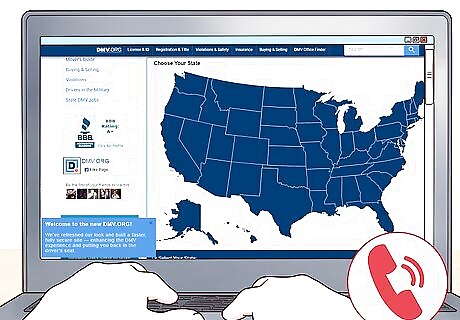
Contact your state’s department of motor vehicles (DMV) in the US. Most states require that homemade trailers over a certain weight must have a title. These laws and the application procedures can vary state by state. Contact your closest DMV to see what is required. You can find your closest DMV by entering your state or zip code here: https://www.dmv.org/dmv-office-finder.php. In the US, you must apply for a Vehicle Identification number (VIN) when you register your vehicle. You will need to provide proof of identity. Some states will require an inspection. Some states require all trailers to be titled while others may not register trailers at all. Others will only require titles on vehicles above a certain weight. For example, in Texas, you do not need to title or register a trailer weighing under 4,000 pounds (1,800 kg). In New York, however, all homemade trailers need to be titled.

Ask your province’s Ministry of Transport in Canada. Canadian provinces may base your titling requirements either on weight or number of axles. You will need to apply for a VIN through your local ministry of transport, and your car must undergo a safety inspection. In Canada, each province has their own office, services, and websites for registering vehicles. Your best option is to call the same office where you registered your car or applied for your driver's license. For example, in British Columbia, you will register and insure your trailer through the Insurance Corporation of British Columbia. They will consider your trailer a “ubilt” vehicle. Go here for more information: https://www.icbc.com/vehicle-registration/specialty-vehicles/Ubilt-vehicles-and-trailers.

Check with your state’s department of transport in Australia. Your trailer must fulfill a certain number of safety and construction standards. Processes for registering trailers can vary from state to state. Generally, you will need to have a state inspection, a completed application for licensing a vehicle, and proof of identity. The weight of your trailer will determine fees. A light vehicle is any trailer under 4,500 kilograms (9,900 lb). Heavy vehicles are over this weight.
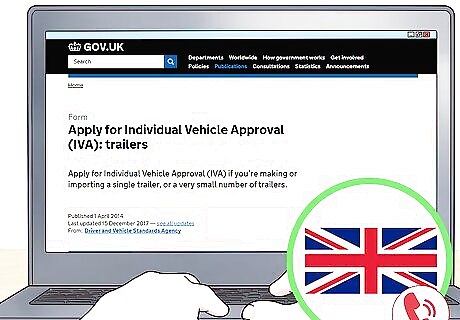
Contact the Driver & Vehicle Licensing Agency (DVLA) in the UK. First, you will need to get a VIN by contacting the DVLA. Then, your trailer must undergo an Individual Vehicle Approval (IVA) inspection. Contact the DVLA via their website or call for more information. You can go here to find the forms and guidelines for trailers: https://www.gov.uk/government/publications/individual-vehicle-approval-iva-it.
Assessing the Trailer
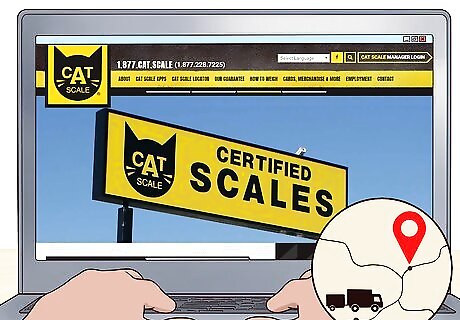
Weigh your trailer at a local weight scale. Contact local car garages, body shops, and public officials to determine where your closet car weight scale is located. Take your empty trailer to the weight scale to be measured. Drive the trailer over the scale, unattach your car, and drive your car off the scale. The scale will record your trailer’s weight. Cat Scales and Penske both offer weight scales around the US. You can visit their websites to find a location near you. You will be given a weight slip when you get your trailer weighed. Save this, as you will need to submit it with your application. The weight of your trailer may determine which forms you fill out, how much you pay in fees, and whether you need to title your trailer.
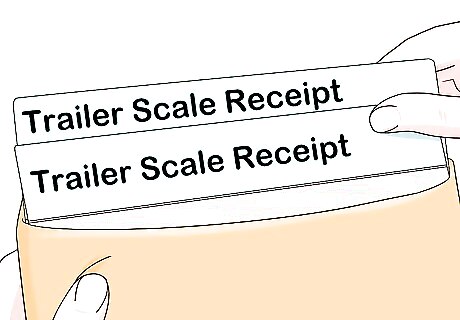
Collect receipts for the materials to determine the car’s value. Most states and countries will require you to present bills of sales for the materials of the trailer. This will determine the value of the trailer, and it may affect what you pay in fees. Add up the cost of materials before you fill out any forms, as you may need to state the total value of the trailer on the application. In the US, you can bring original receipts with you to the DMV. In most cases, they will return the receipts to you when they are done.
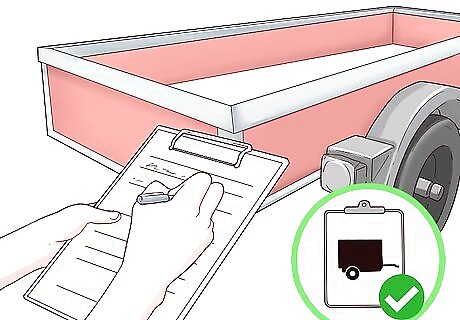
Take the trailer in for a safety inspection at a certified inspector. Most states and countries may require a safety inspection on your homemade trailer to make sure that it is stable. These inspections usually cost between $10-20 USD, although the inspector may charge their own fee on top of that. Some areas will require the safety inspection to be done by DMV or transport officials. In this case, call your local transport officials to set up an appointment. Some areas will let you get an inspection done at approved garages, body shops, or even gas stations. In this case, call your local DMV or other motor vehicle authority to locate the most convenient safety inspector for you.
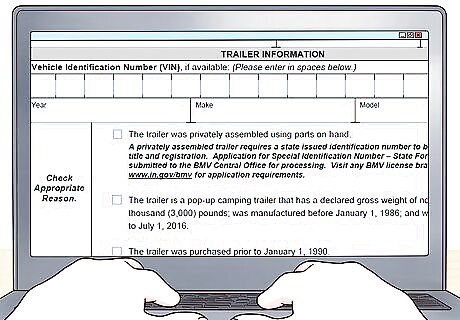
Write a description of how you built the trailer. In some areas, you may need a notarized statement detailing how you built the trailer. Include the materials and techniques that you used to construct the trailer. If you used salvaged materials, you may need to state that as well. You can take the document to a notary at a bank, library, or law office to be notarized. Some US states may have a special form for this called a Statement of Ownership. In this case, use the form to report this information. Some places, such as British Columbia, may just require a summary of the components that you used. Break this list down into tires, axles, frame, deck, and rim. You may need to pay the notary a small fee to have it notarized. While this can vary, it is usually around $25-40 USD. Some banks offer this service for free to their clients.

Take photographs of the front and back of the trailer. Some areas may require additional photographs of the sides of the trailer. Print these photos out and attach them to your application if required.
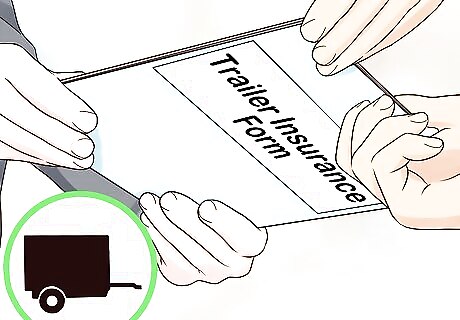
Apply for trailer insurance if it is required. Trailer insurance is sold by automobile insurance agents. You can use the same agent that you use for your car insurance, although you may need a separate policy for the trailer. The insurance agent may require the weight slip, bills for materials, and safety inspection to complete your application. Trailer insurance may be required for some US states and Canadian provinces. It may be optional elsewhere.
Applying for a Title
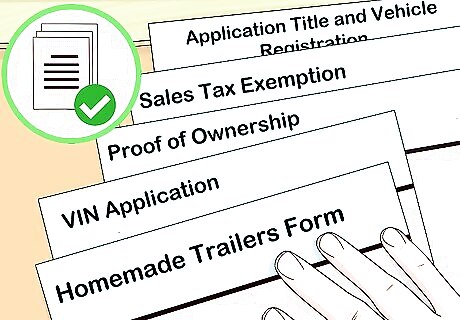
Fill out the proper forms required by your local government. Some areas require more forms than others, so it is a good idea to call your DMV or local transport authorities first. Most forms can be found online on their website or picked up from their office. Some forms you may be required to fill out include: Application for Title and Registration of a Vehicle Sales tax exemption Proof of ownership Application for a VIN A special form for homemade trailers
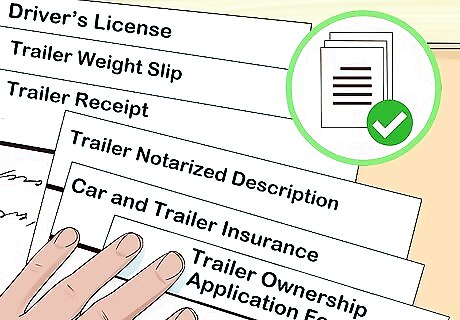
Take the application and other necessary documents to apply in person. You will usually apply in person in the US, Australia, and Canada. Make copies before bringing them to the DMV or transport office. Check with your local office to see what you need to bring with you. In general, you may need: Your driver’s license The weight slip of the trailer Bills of materials used to make the trailer The notarized description of the trailer Proof of car and trailer insurance Completed applications and forms A proof of address, including a driver’s license, payroll stub, utility bill, or voter registration card

Submit copies of your documents online to the DVLA in the UK. Fill out form IVA1t with a Declaration of Amateur Built. Scan and upload the necessary documents to the Technical Application System on this website: https://www.gov.uk/apply-vehicle-approval.

Pay the registration fees. Fees can vary widely between different areas. You may need to pay for the VIN plate, title, registration, and taxes. Some areas may have special fees applicable only to homemade trailers. You can usually pay by credit or debit card. Typically, trailer registration fees are between $20-40 USD. Plate fees may be anywhere from $20-200. These fees can vary based on the weight of the trailer and the state of registration.

Wait for your plate and title in the mail. Once you have submitted your application, it may take between 2-4 weeks for you to receive your documents in the mail. If you were given temporary documents, you can usually use your trailer, as long as you carry the documents with you. Once you receive your plate, screw it onto the back of your trailer.



















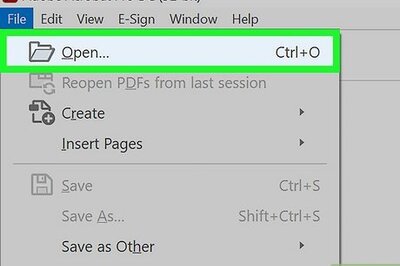
Comments
0 comment